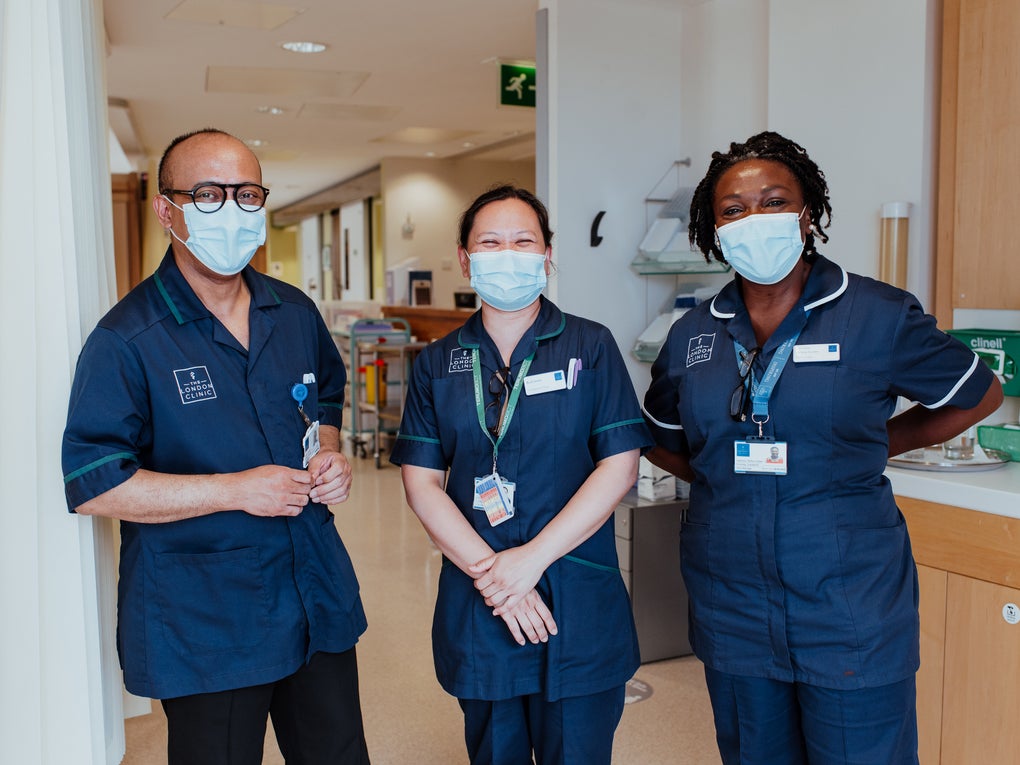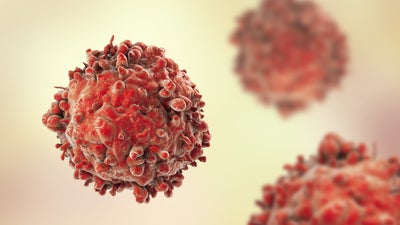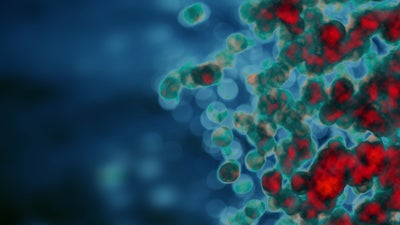
Treatments for blood cancers and blood disorders
Blood cancers and blood disorders require different kinds of treatment, depending on the type of disease and how it progresses. Common treatments include ‘watch and wait’, where doctors closely monitor the condition, chemotherapy, targeted therapies, and immunotherapies. Other treatments like blood stem cell transplants, radiotherapy, surgery, tretinoin, and CAR-T cell therapy are also used to help manage these conditions and give patients a second chance at life. If you or a loved one is facing a diagnosis of blood cancer or a blood disorder, it's important to understand these treatment options as you go through this journey.
Types of treatment
Watch and wait (active monitoring)
This means keeping an eye on your condition and only starting treatment if there are signs that your condition is developing further. You will continue to have regular tests and check-ups. Your doctor may call this active monitoring or active surveillance.
Your doctor may suggest this approach if you do not have symptoms or if they are not troubling you too much. With some conditions that tend to develop slowly, it is better to keep treatment in reserve for when you really need it. Your doctor will only do this if there is no proof that early treatment will help your condition.
All treatment has side effects so there is no benefit in exposing you to them if the treatment would not help in the long term.
Chemotherapy
Chemotherapy is a type of treatment that uses anti-cancer drugs to target and kill cancer cells. It is a common treatment for many types of leukaemia, lymphoma and myeloma — cancers that affect the blood and bone marrow.
In addition to cancer, milder forms of chemotherapy, often in tablet form, can be used to manage certain blood disorders where there is an overproduction of blood cells, though these are sometimes classified differently from traditional cancer chemotherapy.
Blood cells are constantly being replaced, and both normal and cancerous cells multiply by dividing. In blood cancers, certain white blood cells grow out of control, leading to the disease. Chemotherapy works by targeting and killing cells that are dividing more frequently, which includes both cancer cells and some healthy cells that divide rapidly.
Treatment
There are many different chemotherapy drugs available. Treatment may involve a single drug or a combination of several drugs. Some are taken as tablets, while others are administered through an IV drip into the bloodstream.
In certain types of leukaemia, there is a risk that cancer cells could spread to the brain. To prevent this, your doctor might recommend intrathecal chemotherapy, where the drugs are delivered directly into the spinal fluid via a thin tube, similar to how an epidural is given.
Side effects
Side effects of chemotherapy vary depending on the drugs used and the individual. Some side effects are common, such as lowered resistance to infection, tiredness, nausea, diarrhoea, sore mouth, bruising, bleeding, hair loss, and potentially reduced fertility. However, not everyone will experience all these effects, and their severity can differ.
Most side effects are temporary and subside after treatment ends. There are also medications available to help manage or reduce many of these side effects. However, the impact on fertility can be permanent, so it’s important to discuss fertility preservation options with your doctor before starting treatment.
Targeted therapies (biological therapies)
Targeted therapies, sometimes referred to as biological therapies, are a relatively new type of treatment used primarily to treat various blood cancers and, in some cases, myelodysplastic syndromes. These drugs are designed to specifically target proteins or receptors found on cancer cells, interfering with their growth and survival.
The way these drugs work varies based on the specific proteins they target. For example, they may:
• inhibit the growth and division of cancer cells
• bind to cancer cells and trigger their destruction by the immune system
• enhance the immune system's ability to recognize and attack cancer cells.
Some targeted therapies, especially those used in treating certain cancers like myeloma, work by inhibiting the growth of blood vessels that supply tumours with oxygen and nutrients – a process known as angiogenesis.
Targeted therapies are classified based on their mechanisms of action and the type of drug. This might include categories like growth blockers, tyrosine kinase inhibitors, and monoclonal antibodies. While these classifications might come up in discussions with your doctor, they don't directly impact the way you receive treatment.
Treatment
The method of administering targeted therapies depends on the specific drug. Many are taken orally as tablets, while others are given intravenously (IV) through a drip into the bloodstream or as subcutaneous injections under the skin.
Side effects
The side effects of targeted therapies can vary widely, depending on the drug used. Common side effects include fatigue, nausea, diarrhoea, and flu-like symptoms. These therapies, like chemotherapy, can also increase the risk of infections by affecting immune function. Some drugs, such as cancer growth blockers, may cause skin rashes or mouth sores, while others that inhibit blood vessel growth can lead to numbness or tingling in the extremities.
While most side effects are temporary and subside after treatment ends, some – such as nerve damage resulting in persistent tingling – may be long-lasting or permanent in rare cases.
Immunotherapies
Immunotherapies are treatments designed to enhance your immune system's ability to identify and destroy cancer cells. Some immunotherapies also have targeted effects, like monoclonal antibodies. One of the most common immunotherapies used for blood cancers is rituximab, which targets a specific protein called CD20 on the surface of B cells. By binding to this protein, rituximab helps your immune system recognize and eliminate these marked cells.
If you have aplastic anaemia, a blood disorder where your bone marrow doesn't produce enough blood cells, treatment may involve suppressing your immune system. This is typically done using a drug called ciclosporin, often combined with antibody infusions like anti-thymocyte globulin (ATG), administered through an IV drip.
Another advanced form of immunotherapy is CAR-T therapy, where a patient’s T cells are modified to better attack cancer cells.
Treatment
Immunotherapy is commonly administered through an IV drip into a vein or as a subcutaneous injection just under the skin. When starting rituximab, doctors usually prefer to give it through a drip first to monitor for any potential reactions before switching to injection form.
For treating aplastic anaemia, antibody therapy is given through an IV drip, while ciclosporin is taken orally as a capsule or liquid.
Side effects
Immunotherapies can lower your resistance to infection and may cause tiredness, nausea, diarrhoea, bruising, bleeding, or flu-like symptoms such as aches and a raised temperature. An allergic reaction is possible, particularly with the first treatment, which is why you'll receive pre-medications to minimize this risk. Nurses will closely monitor you for signs of a reaction, such as high fever, chills, breathing difficulties, and nausea. These side effects are generally temporary and resolve after treatment ends.
The side effects of immune system suppression treatments, like those for aplastic anaemia, can include allergic reactions (e.g.: fever), nausea, headaches, body aches, swelling, rashes, diarrhoea and blurred vision. Ciclosporin specifically can cause tiredness, dizziness, kidney issues and increased hair growth on the face and body, which usually returns to normal after completing treatment.
Blood stem cell transplants
Stem cell transplants are widely used to treat various blood cancers such as lymphomas and leukaemias, as well as certain blood disorders. The goal is to replace faulty blood cells with healthy ones, often from a donor. In some cases, patients use their own stem cells, known as an autologous transplant, which is commonly used after high-dose chemotherapy.
Most transplants involve using stem cells from a donor, referred to as an allogeneic transplant. The donor is often a close relative with a matching blood type and bone marrow. If a relative isn’t available, a ‘matched unrelated donor’ (MUD) may be found through a donor registry.
Treatment
The first step in a stem cell transplant is conditioning therapy to eliminate the patient’s existing bone marrow, which is producing faulty cells. This is done through chemotherapy, sometimes combined with radiotherapy. After this, new stem cells are infused into the bloodstream via a drip.
These new cells naturally migrate to the bone marrow, where they begin to produce healthy blood cells—a process called engraftment. During this critical period, patients are at high risk of infection and are typically kept in isolation in the hospital. Recovery can take several weeks.
Given the intensity of this treatment, it’s only considered for patients in good physical condition.
Side effects
Side effects stem primarily from the chemotherapy and radiotherapy used during conditioning and may include nausea, diarrhoea, mouth sores, appetite loss, hair loss and infertility.
Additional risks arise from the temporary suppression of bone marrow function. A lack of white blood cells increases infection risk, while low red blood cell and platelet counts can cause anaemia, fatigue, breathlessness and issues with clotting, such as nosebleeds or bruising. Another significant risk is graft-versus-host disease (GvHD), where the donor cells attack the patient’s tissues.
Learn more: Donating stem cells
Radiotherapy
Radiotherapy is a treatment that uses high-energy X-ray radiation to kill cancer cells. While it is not commonly used for blood disorders, it can be employed in specific blood cancers, particularly certain types of lymphoma. In cases of acute leukaemia, radiotherapy to the brain may be used if there's a risk that leukaemia cells have spread there or as a preventative measure to the central nervous system.
Total body irradiation (TBI) may be given before a stem cell transplant, targeting the entire body to destroy existing blood stem cells and suppress your immune system, making way for transplanted stem cells.
Unlike drug treatments, radiotherapy is localised, targeting only the area at which it is aimed. As with chemotherapy, rapidly dividing cells – including cancer cells and bone marrow cells – are more likely to be affected by radiotherapy.
Treatment
A planning appointment is necessary before starting radiotherapy to determine the precise area and dosage. Having radiotherapy is similar to having an x-ray; it’s painless, and the machine may rotate to deliver radiation from different angles. Treatments are typically administered once a day, Monday to Friday. For lymphoma, radiotherapy usually targets specific lymph nodes.
If the brain is the treatment area, a custom mask is made to keep your head still during treatment. For TBI before a stem cell transplant, you might have a single session or multiple sessions over a few days.
Side effects
Radiotherapy side effects vary depending on the treatment area. Common side effects include hair loss in the treatment zone, skin soreness similar to sunburn and fatigue. Radiotherapy to the head can cause a dry, sore mouth, while treatment to the abdomen might lead to nausea or diarrhoea, often managed with anti-sickness medication.
TBI can cause a combination of these side effects, along with a heightened risk of infection until the transplanted stem cells take effect. Long-term effects depend on the treatment area; for instance, radiotherapy affecting the testicles or ovaries can cause infertility, potentially leading to early menopause in women. Treatments involving the eyes can cause cataracts, and those involving the lungs may result in persistent coughs or breathing difficulties due to fibrosis.
Surgery
Surgery is rarely used to treat blood cancers or blood disorders. However, some conditions, such as hairy cell leukaemia, beta-thalassemia, and primary myelofibrosis, can cause significant enlargement of the spleen (splenomegaly). If the enlarged spleen leads to discomfort, pain, or other complications, your doctor might recommend removing it.
Treatment
Removing the spleen requires major surgery under general anaesthesia. It can be done using minimally invasive (keyhole) techniques, though some cases may require open surgery with a larger incision. More detailed information about spleen removal is available on the NHS website.
Side effects
Recovery from surgery typically takes a few weeks. Long term, you’ll face an increased risk of infection due to the spleen’s role in the immune system. Your doctor will probably recommend additional vaccinations, such as for pneumonia, and an annual flu vaccine. Some doctors may also prescribe antibiotics as a preventative measure, which you might need to take for a year or longer. When not on daily antibiotics, you’ll have a prescription at home to start treatment immediately if you develop any signs of infection.
Tretinoin
Tretinoin is a derivative of vitamin A, also known as all-trans retinoic acid (ATRA), and is commonly used under the brand name Vesanoid for treating a specific type of acute myeloid leukaemia (AML) called acute promyelocytic leukaemia (APL).
Treatment
Tretinoin is taken orally in capsule form, typically twice a day. The treatment duration can vary, usually involving cycles that last up to three months, depending on the patient's response and the chemotherapy regimen it accompanies.
Side effects
Tretinoin, like any medication, has potential side effects. These can sometimes overlap with those of chemotherapy, making it challenging to pinpoint the exact cause of certain symptoms. Patients may experience nausea, gastrointestinal issues such as diarrhoea or constipation and difficulty sleeping. Mood changes, including anxiety or depression, can also occur along with headaches, dizziness and loss of appetite. Skin rashes and bone pain are other possible side effects.
A particularly important side effect to be aware of is ‘retinoic acid syndrome’, also known as differentiation syndrome, which is a serious condition requiring immediate medical attention. If you experience any side effects or have concerns during your treatment, it's crucial to consult your doctor.
CAR-T (T cell therapy)
CAR-T cell therapy, once considered largely experimental, is now an approved treatment for specific cancers, including certain types of lymphoma and a particular subtype of acute lymphoblastic leukaemia (ALL) in children and young adults.
This treatment involves collecting some of your own white blood cells, known as T cells. These cells are then genetically engineered to produce a protein called CAR (chimeric antigen receptor). The CAR protein is designed to recognise and eliminate leukaemia or lymphoma cells. The term ‘chimeric’ refers to the protein’s dual function: it both attaches to cancer cells and activates the T cells to attack them.
Treatment
CAR-T cell therapy typically takes a few weeks. The process begins with the collection of T cells from your blood, through a procedure called apheresis. Blood is drawn from one arm, passed through a machine that isolates the T cells, and then returned to your body through the other arm.
In a laboratory, the T cells are modified to produce the CAR protein and then multiplied until there are enough to be infused back into your body. Before receiving the modified T cells, you will usually undergo lymphodepleting chemotherapy. This step is crucial for reducing your existing T cells to create an environment that allows the CAR-T cells to function effectively.
Side effects
When the CAR-T cells are infused, there is a risk of an infusion reaction. To minimise this, you will receive premedication and your medical team will closely monitor you for symptoms like fever, chills, difficulty breathing and nausea.
Another potential side effect is cytokine release syndrome, which can occur within a couple of weeks of the infusion. This syndrome may cause high fever, dizziness and breathing difficulties. Additionally, CAR-T cell therapy can have neurotoxic effects, leading to headaches, confusion, drowsiness, difficulty speaking or seizures. Your healthcare team will monitor you closely and provide immediate treatment if necessary, although these symptoms may resolve on their own.
A blood cancer or a blood disorder diagnosis can feel overwhelming, but you're not alone. Partnering with DKMS can help you share your story and amplify our combined efforts to expand the stem cell registry, so do reach out to us. Together, we can create more hope and opportunities for people living with blood cancer.
References
Watch and wait. Blood Cancer UK.
Chemotherapy. NHS website.
How chemotherapy works. Cancer Research UK.
About chemotherapy side effects. Cancer Research UK.
Chemotherapy side effects. NHS website.
What are targeted cancer drugs? Cancer Research UK.
Primary myelofibrosis. MPN Research Foundation.
Biological therapy. National Cancer Institute.
Targeted therapy to treat cancer. National Cancer Institute.
Monoclonal antibodies. Cancer Research UK.
Bortezomib (Velcade). Cancer Research UK.
Rituximab. Cancer Research UK.
Treatment algorithm. Aplastic anaemia in adults. BMJ Best Practice.
Antithymocyte globulin equine (Rx). Medscape.
Neoral soft gelatin capsules. Electronic Medicines Compendium.
Neoral oral solution. Electronic Medicines Compendium.
Understanding serum sickness. HealthLine.
Haematology. Oxford Handbook of Clinical Medicine (10th edition). Oxford Medicine Online.
Stem cell transplant. Patient.
Principles of radiation oncology: Total body irradiation. Oxford Handbook of Oncology 4th edit. Oxford Medicine Online.
Having a transplant for ALL. Cancer Research UK.
Side effects of a stem cell or bone marrow transplant. Cancer Research UK.
Radiotherapy. NHS website.
Non-Hodgkin lymphoma treatment. NHS website.
Radiotherapy. Patient.
Total body radiotherapy (TBI) for ALL. Cancer Research UK.
Spleen problems and spleen removal. NHS website.
Antibiotic prophylaxis. Prevention of infection in patients with impaired splenic function. UpToDate.
Tretinoin 10mg soft capsules. Electronic Medicines Compendium.
Tisagenlecleucel for treating relapsed or refractory diffuse large B-cell lymphoma after 2 or more systemic therapies. NICE. Published March 2019.
CAR T-cell therapy. Cancer Research UK.


